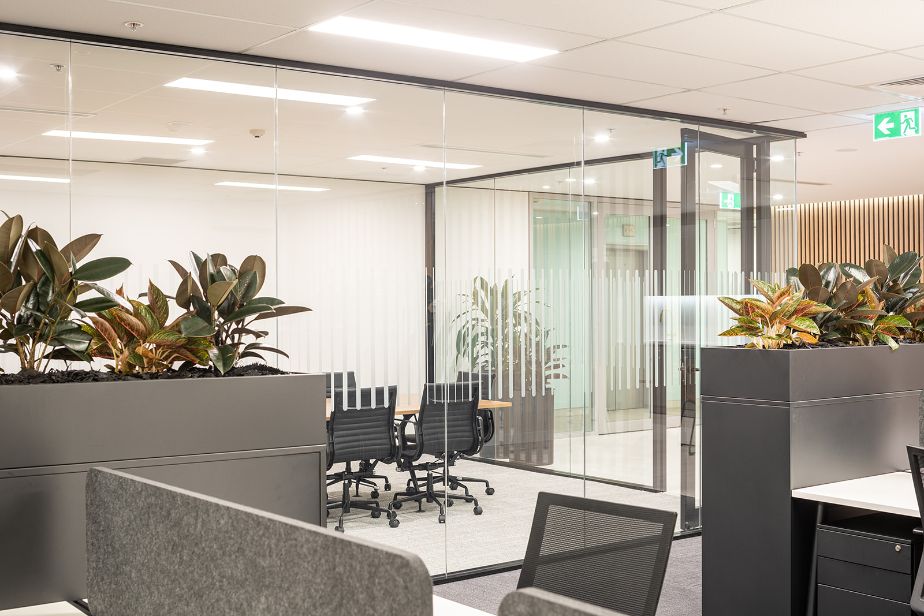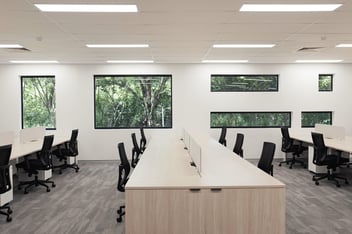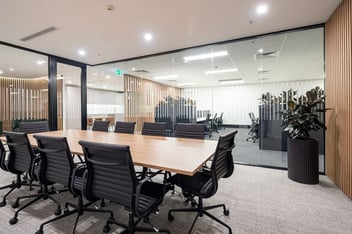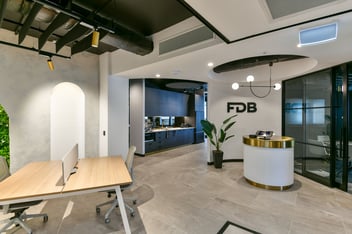Decoding Office Fitout Jargon: Warm Shell vs Cold Shell

The world of office fitouts is filled with industry-specific jargon that can be confusing for those new to it. Among these terms, 'warm shell' and 'cold shell' are two that often cause confusion. At Outkast, we work closely with our clients every step of the way and we're determined to demystify these terms and help you understand what each means for your next office fitout project.
The Basics: What are Office Fitouts?
Before we dive into the specifics of warm shell and cold shell fitouts, let's first understand what an office fitout is. In simple terms, an office fitout is the process of making interior spaces suitable for occupation. It's often used in relation to office developments, where the base construction is completed by the developer and the final fitout by the occupant.
1. Cold Shell Office Fitouts: The Blank Canvas
A cold shell fitout, also known as a 'base build', is essentially a blank canvas. It includes the basic structure of the building, exterior finishes and core utilities like water and electricity. However, it generally lacks interior elements such as flooring, ceilings, partitioning and HVAC systems.
Choosing a cold shell office space offers the ultimate level of customisation. You have the freedom to design your office layout from scratch, choosing everything from the type and placement of partitions to the layout of your IT infrastructure. This level of customisation can be ideal for businesses with specific spatial needs, such as tech startups requiring unique layouts for hardware or creative agencies wanting an open-plan environment to foster collaboration.
However, this freedom comes with additional responsibilities. You'll need to add on the installation of all interior elements, which can be a time-consuming and costly process. You'll also need to ensure that all installations comply with building regulations, which can be a complex task without prior experience.
2. Warm Shell Fitouts: A Head Start
A warm shell fitout, on the other hand, provides a head start. It includes everything in a cold shell fitout, plus some additional elements. These typically include a functioning HVAC system, finished bathrooms, installed lighting and sometimes even a finished concrete floor.
Choosing a warm shell fitout can significantly reduce the amount of work needed to make a space suitable for use. The existing installations not only save time but also reduce the number of decisions you need to make. This can be particularly beneficial for businesses that need to move quickly or those without the resources to manage a complex fitout process.
However, a warm shell fitout may limit your customisation options. Existing installations may not align with your ideal layout and changing them can be costly.
Understanding the difference between warm shell and cold shell office fitouts is crucial when planning your office space. Both options have their advantages and potential drawbacks. A cold shell fitout offers unlimited customisation but requires a larger investment of time and resources. A warm shell fitout provides a head start but may limit your customisation options.
At Outkast, we're here to help you navigate these choices. Our team of experts can provide guidance on whether a warm shell or cold shell fitout is the best fit for your business, helping you create a workspace that fosters productivity and success.
We also partner with our clients to manage the entire process as a turnkey solution, ensuring you have all the regulatory requirements and compliance certifications, saving you time and stress.
For more information or guidance on office fit-outs and refurbishments in Brisbane, Gold Coast or Sydney, contact us at Outkast today!





/006A4856-Edit.jpg?width=352&name=006A4856-Edit.jpg)


/006A4823-Edit.jpg?width=352&name=006A4823-Edit.jpg)

